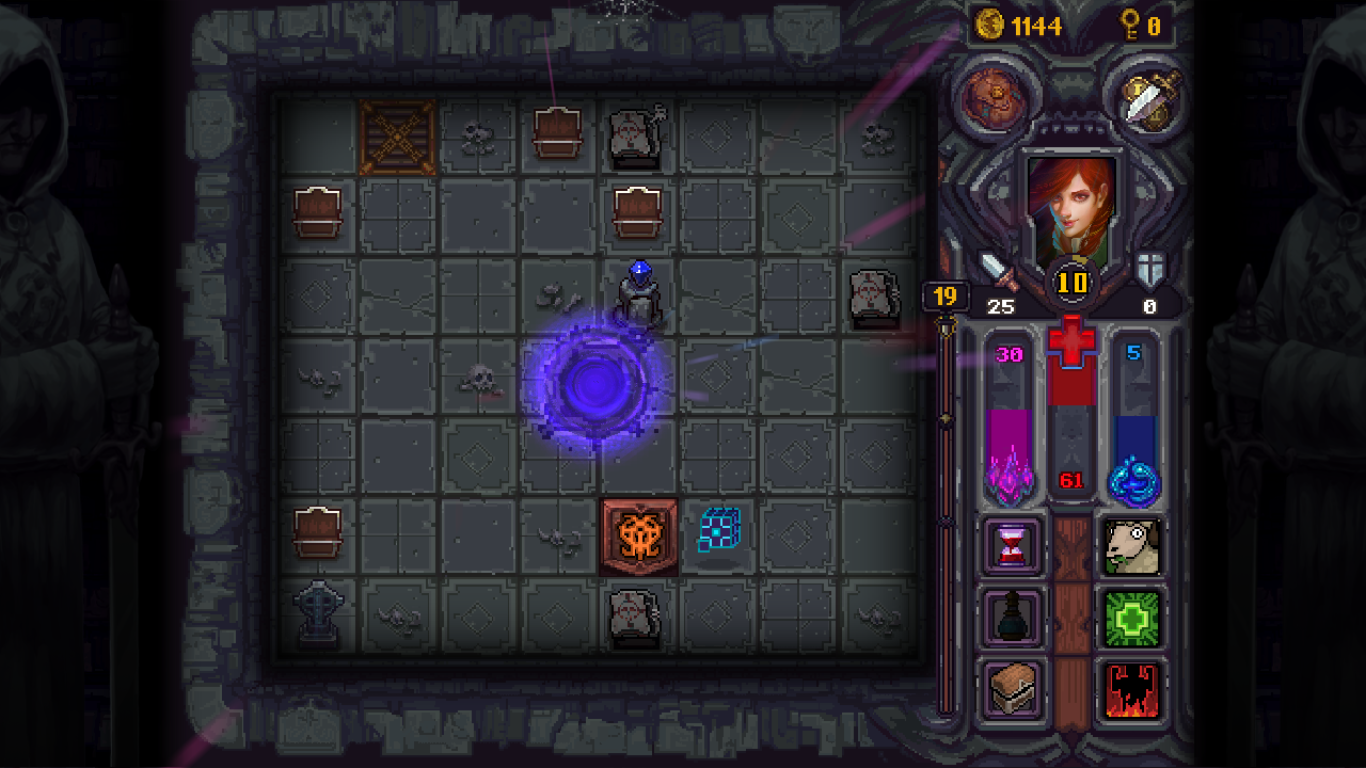

Collapsing Dungeon: Almost every turn, a visible tile will turn into a hole.Selecting the other dialogue option ("Bring it!") will reward the player with extra gold after they have killed all monsters. Selecting the "chicken out" option will skip the current level (which is usually undesirable). Occasionally, the player will be faced with an event about of a confrontation with monsters right at the beginning of a dungeon level.They usually have at least 1 elite monster with higher chance for rare equipment, but is also more dangerous than the normal dungeon level. This is an optional dungeon, a 5 x 5 room that can be access from the main dungeon. After the monster is killed, the tile becomes a normal tile, normal except that there is a graphic of a corpse, indicating that it adds to the count of corpses on that level, which affects some kinds of monsters.

Typically, players will not be able to access locked tiles (unless they use certain items or skills) and have to kill or otherwise displace the monster. When a monster is revealed, the mist tiles and black tiles around it will become locked. Exit: Can be a simple flight of stairs or a locked door.Door to Bonus dungeon: Can be opened with a key.Collapsed tiles (chasm): The tiles next to it will not become mist-tiles.Normal tiles: Totem poles (trap-detecting, monster-detecting, etc) can only be placed here.Note: After each tile (with the exception of collapsed tiles) is revealed, its adjacent tiles become mist tiles. There are various equipment (and monsters) that help to reveal extra tiles in one turn, but heroes will only receive soul points for the tile that they reveal by themselves. Revealing each mist tile consumes 1 turn and restores 1 soul points. Mist tiles are next to already-revealed tiles, and can be revealed with a click, while black tiles cannot be interacted with. There are 2 types of concealed tiles in the dungeon: black tiles and mist tiles. The dungeon's darkness conceals not only deadly traps and monsters, but also the means to improve the character's power and wealth.Īt the beginning, only 1 tile of the dungeon is revealed, and the rest is concealed. To progress to the next level, the players has to locate the current level's exit and, in case it's a locked door, has to find a key to unlock the door. Each level consists of 56 tiles (8 rows, 7 columns), with only one already revealed. It is divided into levels (in basic mode, there are 20 levels total). Some inscriptions are zigzag-shaped, while others form a grid pattern.Įight runes on the front face of the stone spell “idiberug” when converted into Roman letters.Īccording to Zilmer, this could be the name of a woman called “Idibera,” it could be referring to a kin named “Idiberung,” or it could say, “for Idibera.The dungeon is where the main part of the game takes place. The stone has a “very special appearance,” according to Zilmer, featuring an “unexpected” mixture of thinly incised, shallow runes, rune-like characters and other visual motifs. But this also makes us wonder what else we may not have known about regarding the use of runic writing in the early Iron Age Scandinavian society,” Zilmer said. “This means that the rune-stone tradition is older, maybe even by a few hundred years, than we have previously assumed. He said the discovery was “something unique.” “Runestones with runes from the older futhark (the runic alphabet) are very rarely found in dateable, archaeological contexts and we understood that this had the potential to give us new knowledge about runes,” Steinar Solheim, archaeologist and excavation manager at the Museum of Cultural History, told CNN Wednesday. Alexis Pantos/Museum of Cultural History/University of Oslo The stone features "unexpected" inscriptions. It contains the first three letters of the runic alphabet – “f,” “u” and “th” – on one of its sides, according to the museum. Svingerudsteinen is the only stone found by archeologists that dates to before 300 AD. Of the runestones found in Norway, only about 30 are believed to date from earlier than around 550 AD. Scandinavia has several thousand runestones from the Viking Age – between 7 AD – but there is less evidence of runes from earlier times. Runes are the oldest known form of writing in Scandinavia, and the alphabet was widely used from the beginning of the Common Era (CE) and throughout the Viking Age until the late Middle Ages, according to the university. “It provides first clear evidence of the occurrence of rune-stones in Scandinavia in the first centuries AD, thanks to the possibilities we have had in this case to carry out radiocarbon dating of the grave in which the stone lay,” she added. Radiocarbon dating revealed the stone dates to between 1 and 250 AD.


 0 kommentar(er)
0 kommentar(er)
